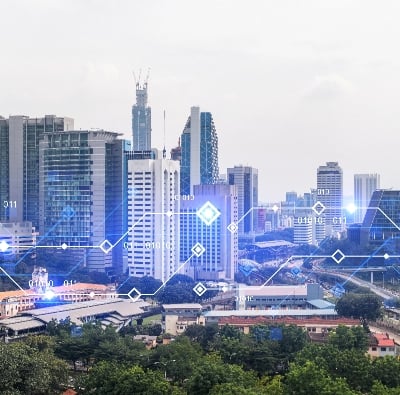

We rely on a multitude of systems including manufacturing, healthcare, security and civil infrastructure for the proper functioning of society. All of these systems make up an interconnected network that is critical to the activities of everyday life. However, these essential systems are susceptible to unpredictability and risk, which must be accounted for in their planning and ongoing maintenance.
Vanderbilt University’s M.Eng. in Risk, Reliability and Resilience (RRR) is uniquely designed to develop expertise and leadership in making informed decisions that properly account for uncertainty and risk, in order to enhance quality, efficiency, safety, security and environmental protection.

 engineer in a white lab coat" />
engineer in a white lab coat" />
Risk management in engineering sees beyond the immediate needs and analyzes and adjusts for different risks and uncertainties that may come. Engineers have assisted communities in reducing the harmful impact of adverse events, from natural disasters to technological hazards.
The setting of engineering codes and standards, along with the design and construction of infrastructure, are enacted to prevent damage inflicted by hazards. Codes and standards have evolved through the years, continually being formed by laboratory research and past disasters.
Always forward-thinking, risk and reliability engineers calculate for safety in the event of uncertainty and how to mitigate the damage once disaster strikes. Risk management engineering has improved societal well-being and even accounted for saved lives.
For example, in the event of a natural disaster, buildings previously were designed primarily concerning ‘ life safety issues ,’ meaning, the main intent of the design was to ensure all occupants could safely evacuate.
However, in the past 20 years, codes and standards have been updated to safeguard both life safety issues and the structural integrity of the building in the case of an unforeseen event. Furthermore, building regulations may now include considerations for accessibility for the disabled, historic preservation and decrease of economic loss during design-level events.
Progress in the realm of risk, reliability and resilience engineering has resulted in sophisticated solutions to help mitigate the damage and loss of life in many significant areas of society. A very small number of examples are below.
Earthquakes have the capacity for widespread damage to infrastructure and significant loss of life. In the United States, The aftermath of the 1994 Northridge earthquake is reported to have cost the U.S. $20 billion in direct losses. The National Earthquake Hazards Reduction Program (NEHPD) was enacted in 1977 to improve techniques in predicting, forecasting, and reducing seismic vulnerabilities of facilities and systems. Risk and reliability engineers adopted appropriate seismic building codes for new structures to protect critical lifelines including electrical power, communication systems, gas and liquid fuel pipelines, transportation systems and water and sewage systems.
Machinery that produces essential items and conducts functions necessary for daily life such as power plants, oil refineries, and factories are susceptible to risks such as deterioration, malfunction and natural disasters. Risk and reliability engineering accounts for these events and adjusts the planning and maintenance of equipment properly. Engineers often conduct what is called predictive maintenance . Predictive maintenance uses historical data and ongoing measurements of the equipment to predict future failures or malfunctions and corrects or adjusts them before their occurrence. These types of proactive measures help companies prevent loss of business, protect employees and bystanders from injury, and ward off property damage.
Risk management is essential to the protection of various technologies, specifically IT systems. In our ever-digitizing world, it is imperative that essential institutions, like the U.S. government, have a risk management plan in place to protect itself from cyber attacks. Risk management engineers determine the extent of a threat or risk associated with a given IT system and formulate a plan to mitigate these risks. It not only is important that these systems are protected from breach, but also that in the event of an adverse effect, they can achieve gains in mission capability. The National Institute of Standards and Technology’s Risk Management Guide for Information Technology Systems provides a risk assessment methodology for IT services that outlines nine essential steps.